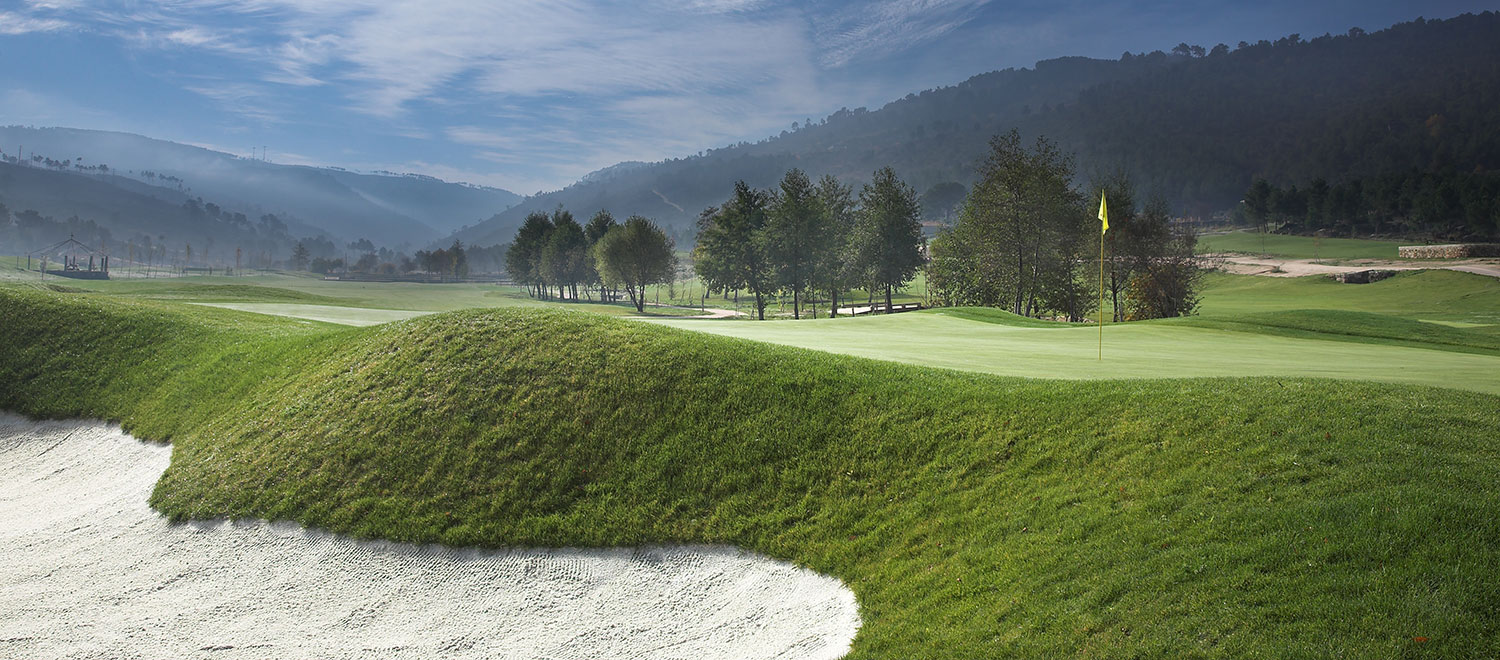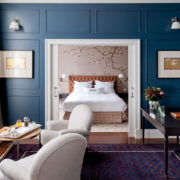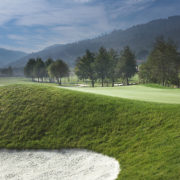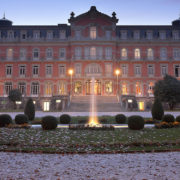- Vidago Park, Apartado 16, 5425-307 Vidago – Portugal
- www.vidagopalace.com/en/
- 351 276 990 900
Description:
The Vidago Palace Hotel was built during the reign of Portugal’s King Carlos I as a summer retreat next to mineral water springs, but opened for business as a hotel in 1910 after Carlos met his untimely demise and his son, King Manuel II, fled the country under threat. It’s located in Northern Portugal, about 1.5 hour’s drive from the coastal city of Porto. The resort is about 50 minutes’ drive to the Douro Valley region, an area famous for its wines and ports and one recognized for three World Heritage Sites by UNESCO.
But before you try the port you must conquer the golf course, which has two distinct halves. Scottish architect Philip Mackenzie Ross designed the original par-32, nine-hole course on the extensive palace grounds in 1936. It was then renovated, extended and transformed into a championship 18-hole course in 2010 by British design group Cameron Powell.
The front half starts in the beautiful Centennial Park before descending into the Oura Valley for 11 holes. The final three holes return to the top of the Centennial Park with a panoramic view of the surrounding hills and villages. The elevated tees, which have impressive granite retaining walls, and greens both offer great vantage points over the parkland. Vidago’s fairways are lined with hundred-year-old trees and the bunkers are strategically placed within sight to test your distance judgement and control.
The original holes offer plenty of challenges. The 165-meter (180-yard) hole 3 is a tricky early test, with a stream running across the front of a green that also has five bunkers flanking it. The green has two tiers and narrows at the back. The 485-meter (530-yard) hole 4 has a stream down the right side of the fairway before crossing it near a green that also has four bunkers sitting in front of it. The challenge continues on the newer back nine, with the 345-meter (377-yard) hole 13 offering a similar test. The Vidago Palace course hosted the Portugal Senior Open in 2014.
The challenges:
Some narrower fairways lined by trees, but also plenty of elevation changes as well as smartly-placed bunkers around greens and streams to avoid. The advice here is to play the regulation three shots on par fives to stay out of trouble.
When to play:
Year-round, although frost and sometimes fog can delay the opening of the course during winter months from December to February.
Par: 72
Yardage: 6308 meters; 6938 yards
Slope: 73.8
Rating: 141
Best hole:
Hole 17 is the signature hole and is regarded as one of the most striking holes in Portugal for its stunning views and dramatic elevation change. Dubbed “Eagle’s Nest,” golfers tee off on the highest point of the course and play to a green that sits on the lowest point. The undulating fairway doglegs to the right on the par 5.
The designer says:
“We have strived to retain the integrity of the original design and to consciously reflect its aesthetics, playability and spirit.” – Cameron Powell *
The resort experience:
Vidago Palace has the heritage and grandeur of a castle built for a king, but since it was completely renovated in 2010 to mark the hotel’s centenary, it’s now regarded as one of the most luxurious resorts in Europe. Vidago Palace was named the Best Luxury Spa Hotel in the World at the World Luxury Hotel Awards in 2015 and the Best International Spa 2016 at the Condé Nast Traveler Awards 2016. Well-travelled European golf writer Jo Maes rates Vidago Palace as one of the top 10 golf resorts he has stayed and played at in the world.
“The hotel combines old but renovated charm with modern design and sumptuous luxury,” Maes said. “With multiple restaurants and food to match, a spa with water derived from the old thermal baths and tranquility in abundance, Vidago Palace is a place away from it all. Within driving distance of the Douro Valley vineyards and the historic city of Porto, it’s an ideal retreat.”
Dine and wine:
Some great dining options here. Gourmet restaurant Salão Nobre offers classic Portuguese and signature dishes by Portuguese MasterChef, Rui Paula (with one Michelin Star). You’ll also find elegant settings to dine in the Grand Ballroom and Four Seasons Room. Bathed in natural light under a glass skylight, the Winter Garden offers a romantic spot with fresh fruit and pastries for breakfast. The Wine Bar provides great local drops but you can also buy local produce such as cheeses, olive oil and bottled fruit and vegetables. For more informal dining, try the Club House Bar and Restaurant or the Pool Bar.
The accommodation:
There are 70 rooms and suites in total, starting at Classic Room and moving through to a more luxurious Suite (with living room/library, Italian furniture, dressing room). Each accommodation features contemporary but elegant décor, bright interiors, designer furniture, views of the park, bathrooms with modern fixtures and creature comforts that would have surprised poor King Carlos I (like the LCD TV, branded cosmetic products and porcelain accessories.)
Other activities:
At the resort, you must try the thermal spa. Vidago Palace was built on an estate with three springs that produce natural carbonated mineral water that became known for its healing properties (it was a favorite with the aristocracy; they still bottle and sell Vidago water). The spa, which was designed by Pritzker Architecture Prize winner Alvaro Siza Vieira on 100 hectares (247 acres) of scented cedar and pine, uses this same water source for a variety of therapeutic treatments including an ice fountain and vitality pool.
Off site, you must head to the Douro Valley to sample the port wine at vineyards that have been fermenting grapes for 2000 years.
* Source: www.cameronpowell.com/vidago_palace_golf_course.html







